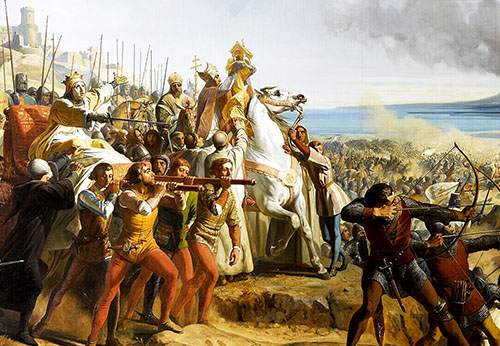Featured Author
 Scribe
Scribe
Aldarion submitted a new blog post:
Building a Fantasy Army — Strategy & Organization
This article is by Toni Šušnjar.

Strategy and Enemies
The structure of an army will depend on the strategy, as strategy will determine the army's role and tasks. A state which carries out expansion through outright territorial conquest will have large numbers of heavy infantry, combat engineers and artillery, and possibly some heavy cavalry as well (e.g. Roman Empire, 10th century Byzantine Empire). If conquest is done by slowly destroying an opponent's economic and social structures through constant raiding (such as chevauchee or razzia / ghazw), then majority of the army will be light cavalry, with some heavy cavalry support (e.g. Seljuk and Ottoman Empires), and light infantry will be used if terrain is unsuitable for cavalry. If a state is defending against cavalry raids, then light cavalry will be dominant (e.g. 15th century Hungary), whereas heavy cavalry will predominate if enemy raiders are primarily infantry. If enemy armies are too powerful to face in the field, light and heavy cavalry will be used to harass the invading army and cut off its supplies and foraging. In terrain unsuitable for cavalry operations, heavy infantry will be used instead.
Raiding — as a strategy — is generally preferred against a peer opponent, especially if a state cannot have a developed logistical support system. While much slower than a direct conquest,...
Continue reading the Original Blog Post.
Building a Fantasy Army — Strategy & Organization
This article is by Toni Šušnjar.

Strategy and Enemies
The structure of an army will depend on the strategy, as strategy will determine the army's role and tasks. A state which carries out expansion through outright territorial conquest will have large numbers of heavy infantry, combat engineers and artillery, and possibly some heavy cavalry as well (e.g. Roman Empire, 10th century Byzantine Empire). If conquest is done by slowly destroying an opponent's economic and social structures through constant raiding (such as chevauchee or razzia / ghazw), then majority of the army will be light cavalry, with some heavy cavalry support (e.g. Seljuk and Ottoman Empires), and light infantry will be used if terrain is unsuitable for cavalry. If a state is defending against cavalry raids, then light cavalry will be dominant (e.g. 15th century Hungary), whereas heavy cavalry will predominate if enemy raiders are primarily infantry. If enemy armies are too powerful to face in the field, light and heavy cavalry will be used to harass the invading army and cut off its supplies and foraging. In terrain unsuitable for cavalry operations, heavy infantry will be used instead.
Raiding — as a strategy — is generally preferred against a peer opponent, especially if a state cannot have a developed logistical support system. While much slower than a direct conquest,...
Continue reading the Original Blog Post.
